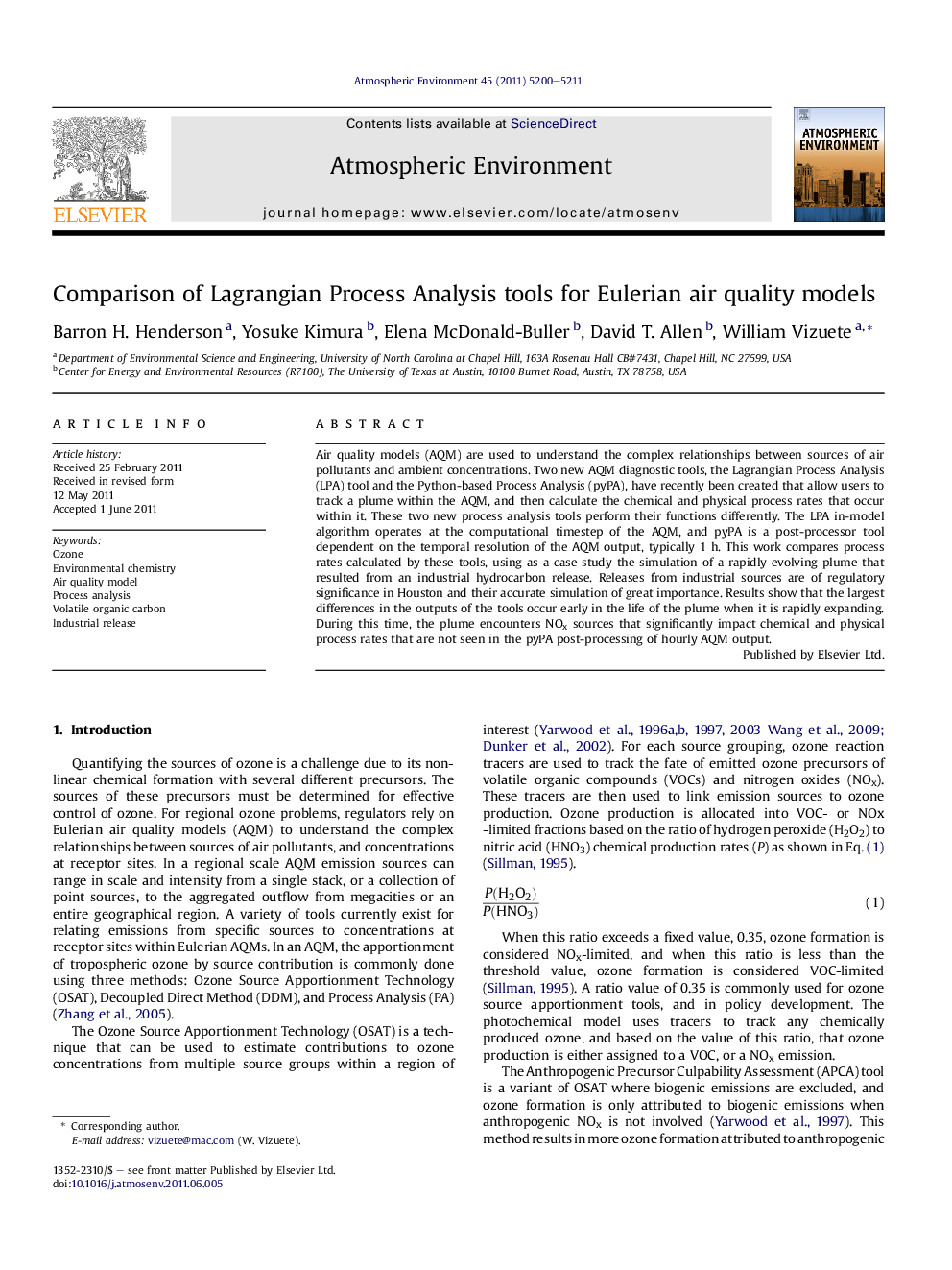| Article ID | Journal | Published Year | Pages | File Type |
|---|---|---|---|---|
| 4439521 | Atmospheric Environment | 2011 | 12 Pages |
Air quality models (AQM) are used to understand the complex relationships between sources of air pollutants and ambient concentrations. Two new AQM diagnostic tools, the Lagrangian Process Analysis (LPA) tool and the Python-based Process Analysis (pyPA), have recently been created that allow users to track a plume within the AQM, and then calculate the chemical and physical process rates that occur within it. These two new process analysis tools perform their functions differently. The LPA in-model algorithm operates at the computational timestep of the AQM, and pyPA is a post-processor tool dependent on the temporal resolution of the AQM output, typically 1 h. This work compares process rates calculated by these tools, using as a case study the simulation of a rapidly evolving plume that resulted from an industrial hydrocarbon release. Releases from industrial sources are of regulatory significance in Houston and their accurate simulation of great importance. Results show that the largest differences in the outputs of the tools occur early in the life of the plume when it is rapidly expanding. During this time, the plume encounters NOx sources that significantly impact chemical and physical process rates that are not seen in the pyPA post-processing of hourly AQM output.
► Two process analysis tools that track plumes within a grid model were compared. ► Both tools tracked a rapidly evolving plume resulting from an industrial release. ► Largest differences in results occur when plume is rapidly expanding. ► As the plume grew larger differences in results became indistinguishable. ► When air quality model output was reduced to 5 min results were nearly identical.
